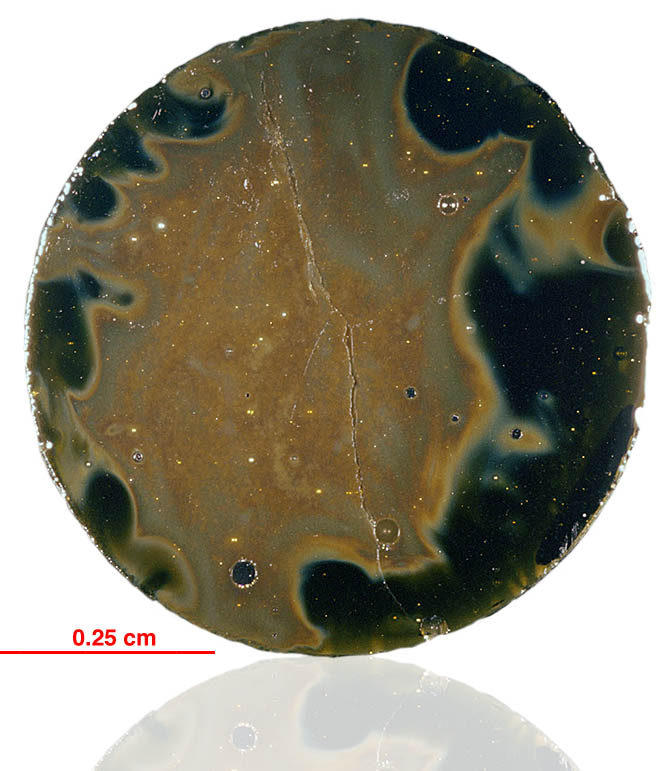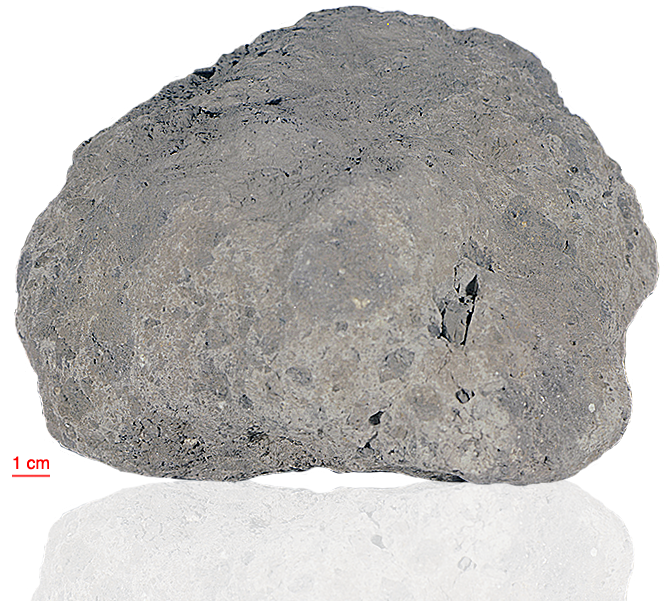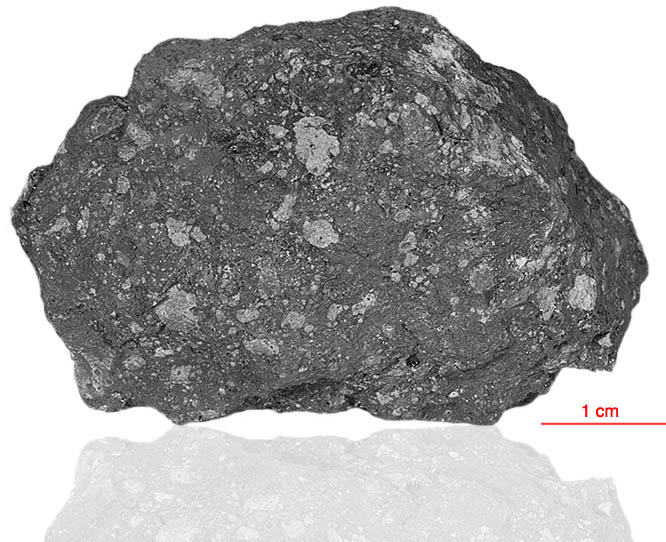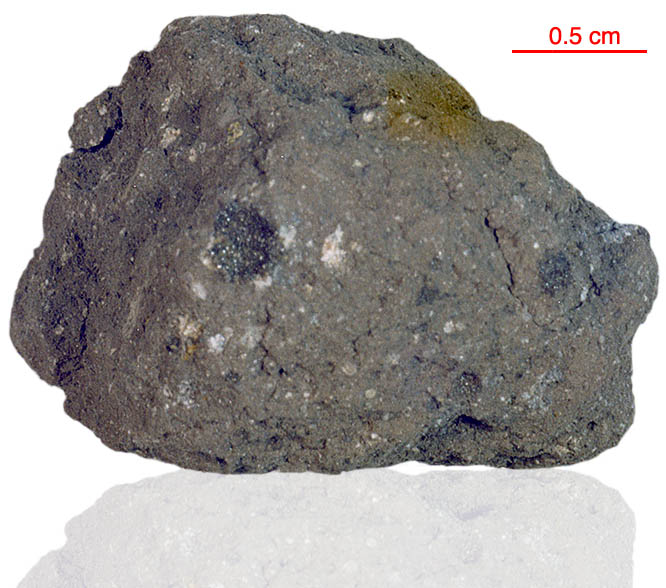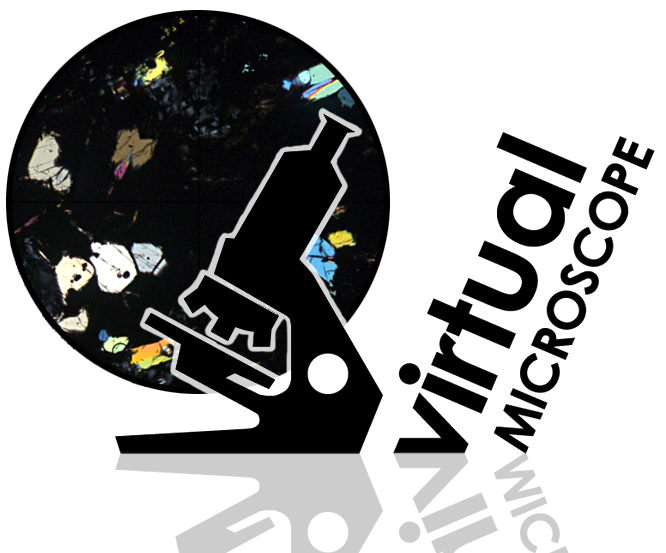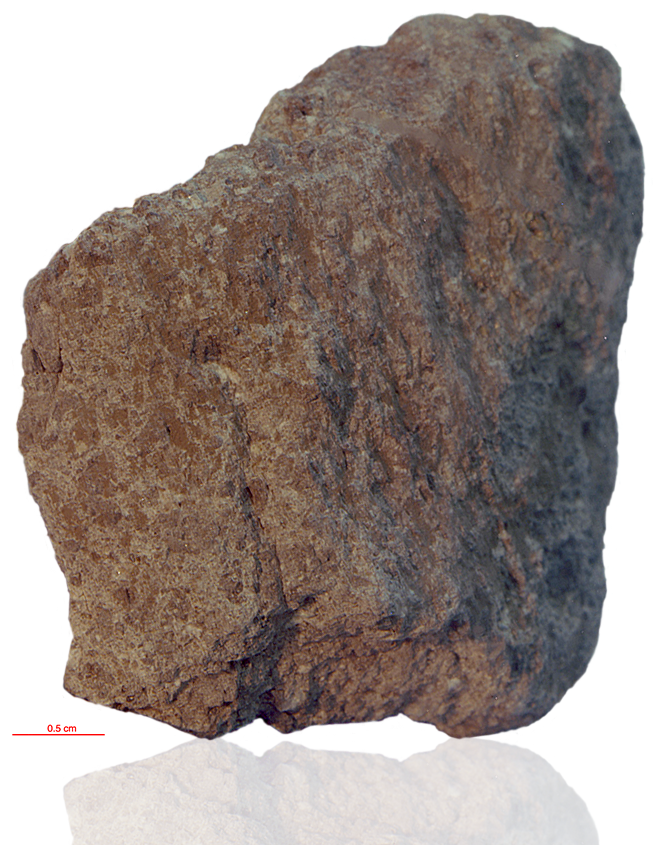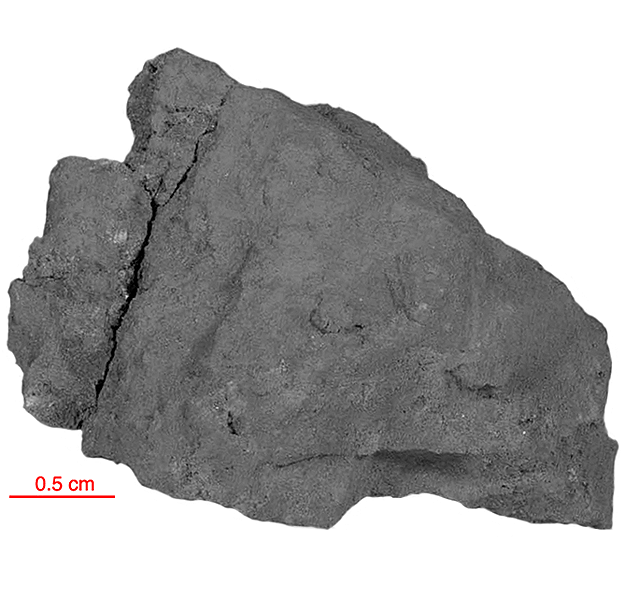
Fact sheet
14006 is a tough, crystalline breccia with 15-20% vugs and vesicles. The matrix is fine-grained with intergrown plagioclase, clinopyroxene and ilmenite. 14006 has a composition typical of the crystalline-matrix breccias from Apollo 14.
The sample weighed 12.13 grams before analysis. It has not been dated.
Our thin section is slightly thick and displays plagioclase feldspar as pale yellow crystals (in XPL). Note the rock fragments with variable mineralogy amongst the crystal-rich breccia. Rotation 2 shows one such rock fragment containing abundant plagioclase feldspar.
Further details of this and other Apollo samples are here: http://curator.jsc.nasa.gov/lunar/
The Apollo 14 landing site was in a region formed by impact-basin debris.
Most of the 42 kilograms of rocks and soil collected on Apollo 14 are breccias (rocks that are composed of fragments of other, older rocks). In some cases, the rock fragments that form a breccia are themselves breccias. Such rocks obviously have experienced complex histories with multiple generations of impact events. Some breccias were heated enough that some of the material in the rock was melted.
Apollo 14 was launched on 31 January 1971.

